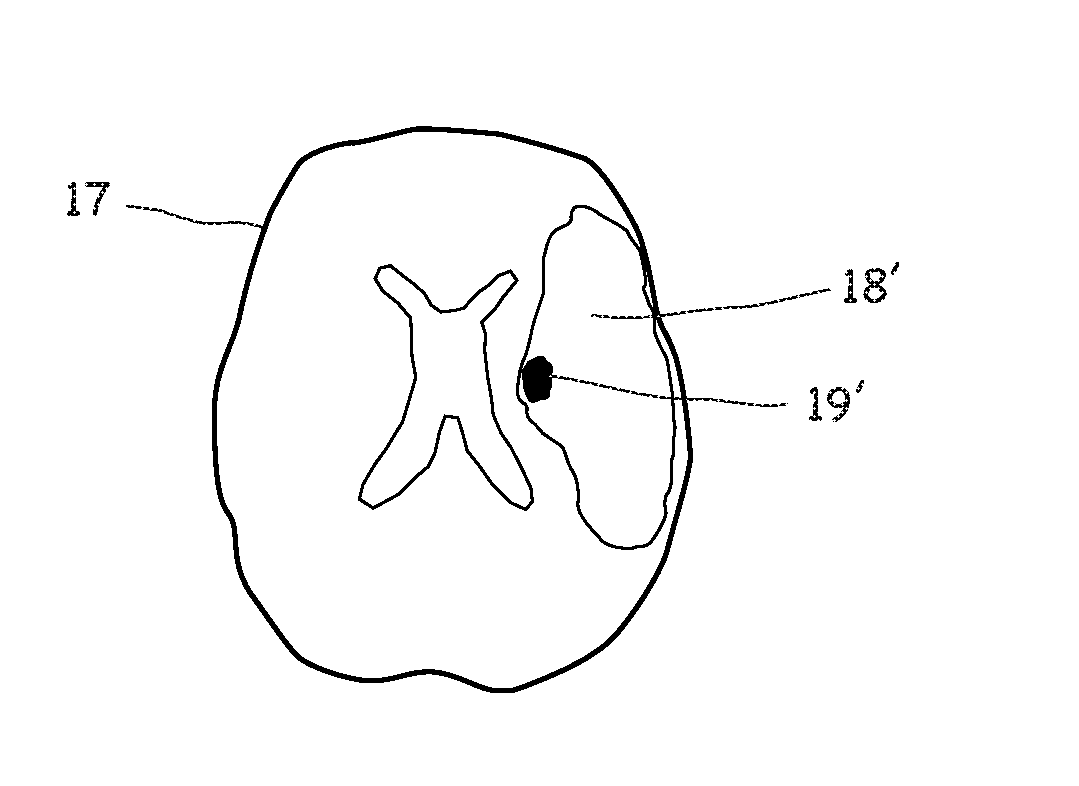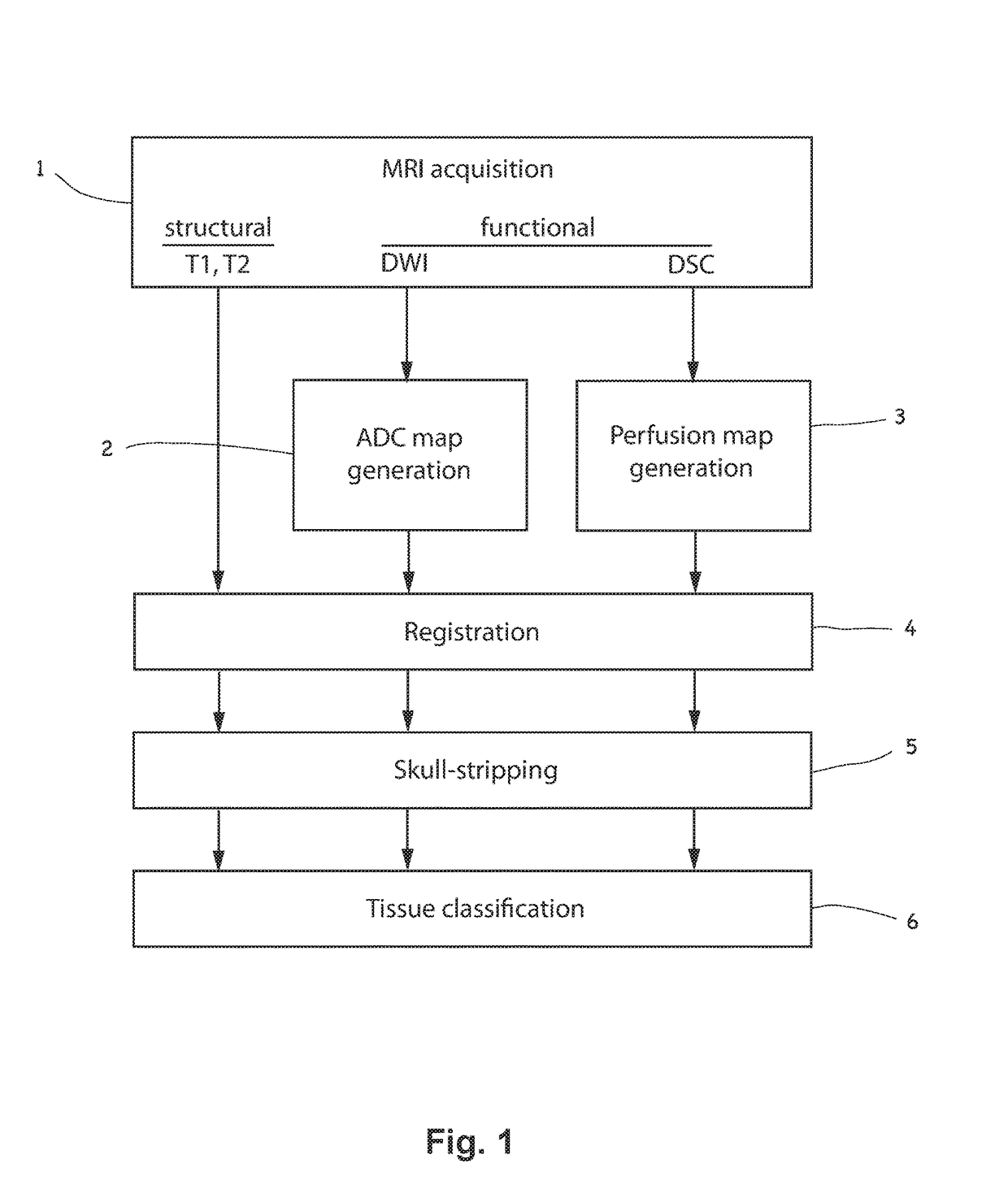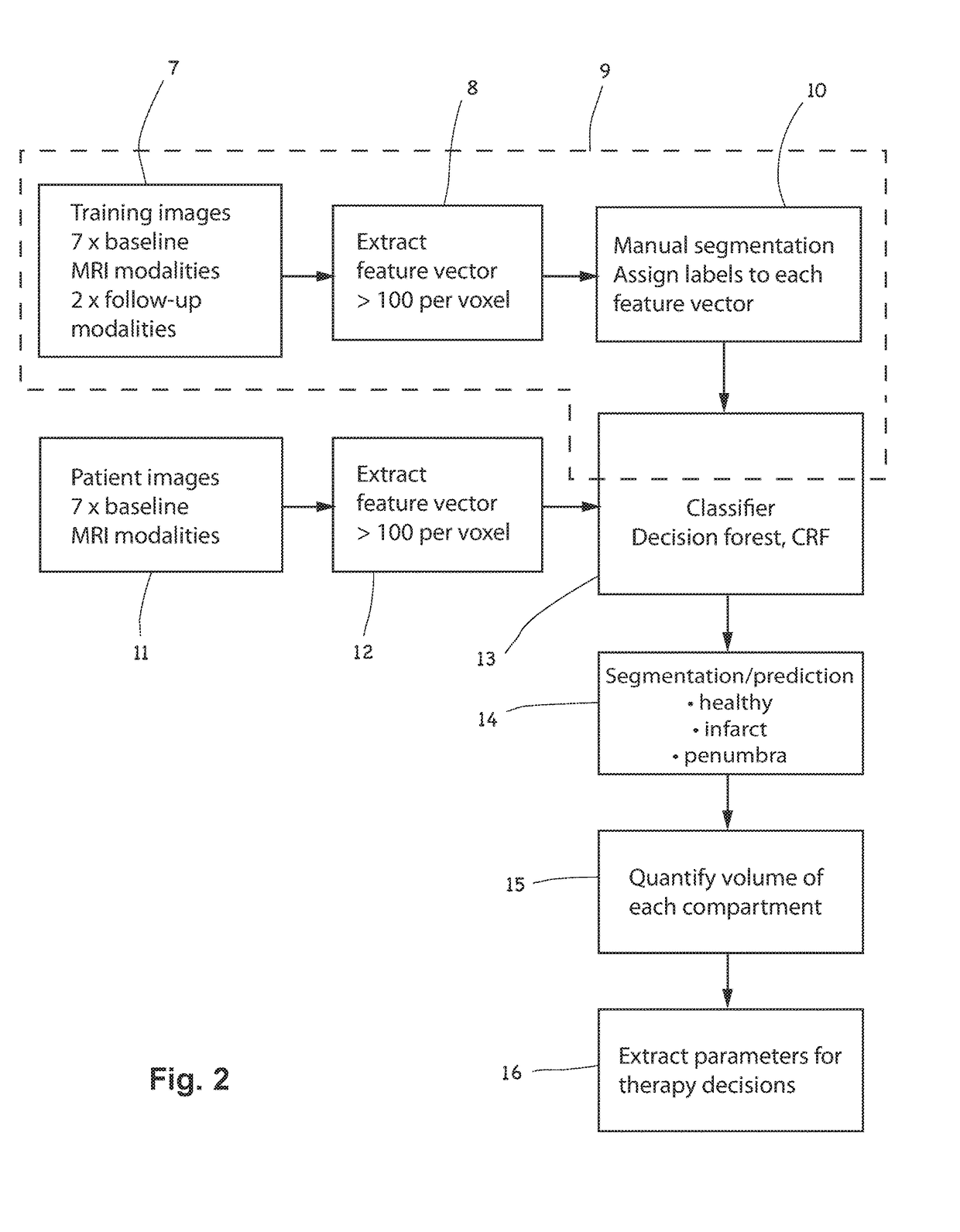Method for segmenting and predicting tissue regions in patients with acute cerebral ischemia
a technology of cerebral ischemia and tissue regions, applied in the field of multi-dimensional imaging, can solve the problems of limited accuracy of classification models, insufficient reliability or accuracy of outputs, and insufficient reliability of classification models
- Summary
- Abstract
- Description
- Claims
- Application Information
AI Technical Summary
Benefits of technology
Problems solved by technology
Method used
Image
Examples
first embodiment
[0079]As will be described in relation to the invention, the training data may comprise image datasets, 7, whose modalities and feature vectors, 8, correspond to the image dataset(s), 11, and feature vector(s), 12, of patients. The training data comprises pre-treatment images comprising hypoxic regions of previous stroke patients, and the voxels may be manually segmented, 10, for example by an experienced neuroradiologist, in order to generate training data for training the classifier, 13.
second embodiment
[0080]As will described in relation to the invention, and as illustrated in FIG. 2, the training data 7 may additionally comprise follow-up image datasets, for example post-treatment image datasets corresponding to (i.e. relating to the same patients as) at least some of the pre-treatment MRI images of the hypoxic regions of the previous stroke patients mentioned above. In the example illustrated in FIG. 2, the follow-up MRI image datasets may comprise only structural modalities (e.g. T1contrast and T2) This allows the learning process to benefit from the outcome information present in the structural modality information. Advantageously, the training data 7 may optionally include information about the treatment which was carried out on the patients whose follow-up MRI image data is included. Such treatment parameter information (for example the type of treatment, or the frequency, dosage, drug details, therapy duration, surgical interventions etc) may also be included in the trainin...
PUM
 Login to View More
Login to View More Abstract
Description
Claims
Application Information
 Login to View More
Login to View More - R&D
- Intellectual Property
- Life Sciences
- Materials
- Tech Scout
- Unparalleled Data Quality
- Higher Quality Content
- 60% Fewer Hallucinations
Browse by: Latest US Patents, China's latest patents, Technical Efficacy Thesaurus, Application Domain, Technology Topic, Popular Technical Reports.
© 2025 PatSnap. All rights reserved.Legal|Privacy policy|Modern Slavery Act Transparency Statement|Sitemap|About US| Contact US: help@patsnap.com



